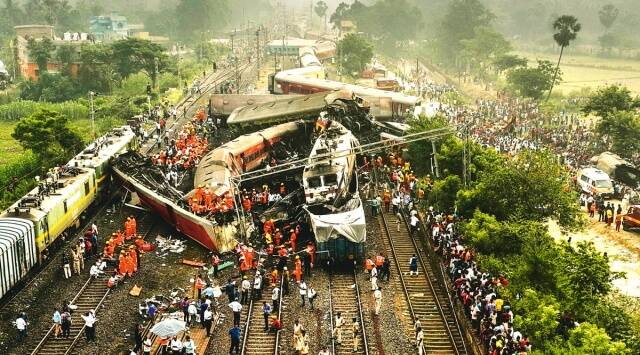
Of the more than 1,100 rescued, nearly 500 were being treated at various hospitals in the state.
In one of the largest search-and-rescue operations in recent years, over 2,000 personnel raced against time to make their way through tonnes of steel and find the hundreds trapped in the wreckage of two trains that had crashed Friday evening near Balasore in Odisha. They found 288 bodies, and rescued over 1,100 people — the worst train tragedy in the country in two decades.
The horrific collision involving the Chennai-bound Coromandel Express, the SMVT Bengaluru-Howrah Express and a goods train took place near Bahanaga Bazar station around 7 pm Friday.
Of the more than 1,100 rescued, nearly 500 were being treated at various hospitals in the state.
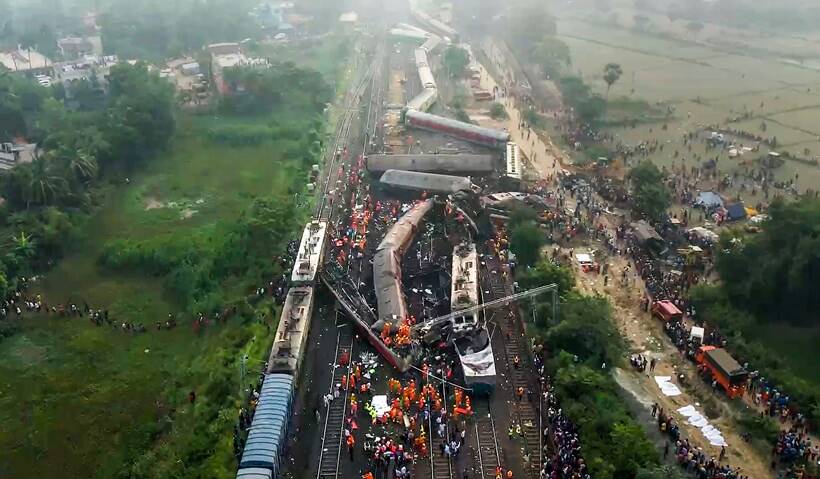
Rescue operation underway following an accident involving Coromandel Express, Bengaluru-Howrah Express and a goods train, in Balasore district, Saturday, June 3, 2023. (PTI) 2/12
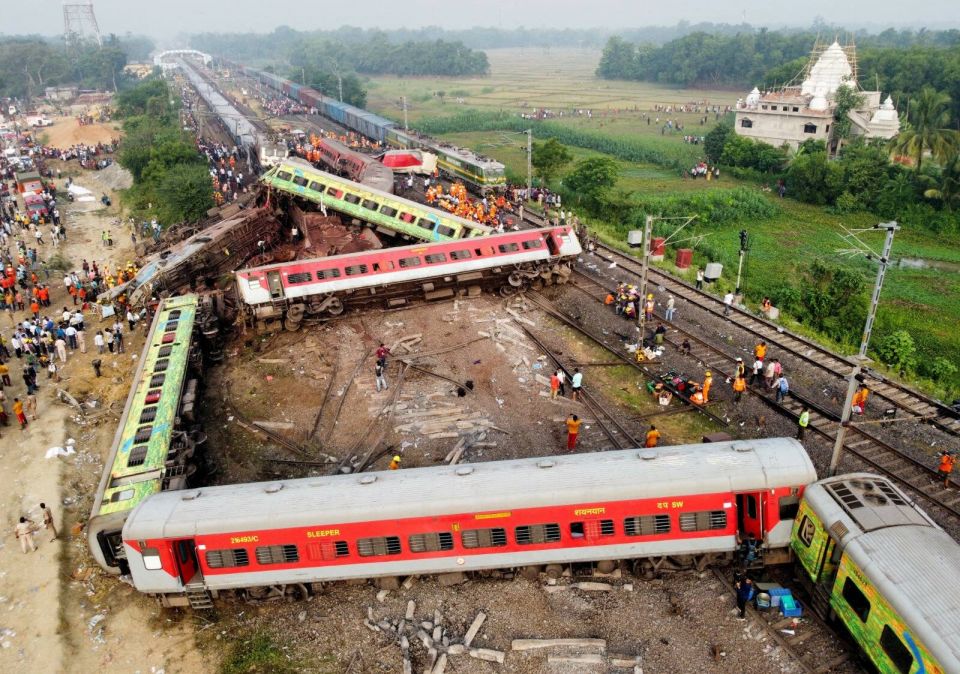
At least 238 people have been killed, and over 900 injured (Photo : Reuters) 3/12
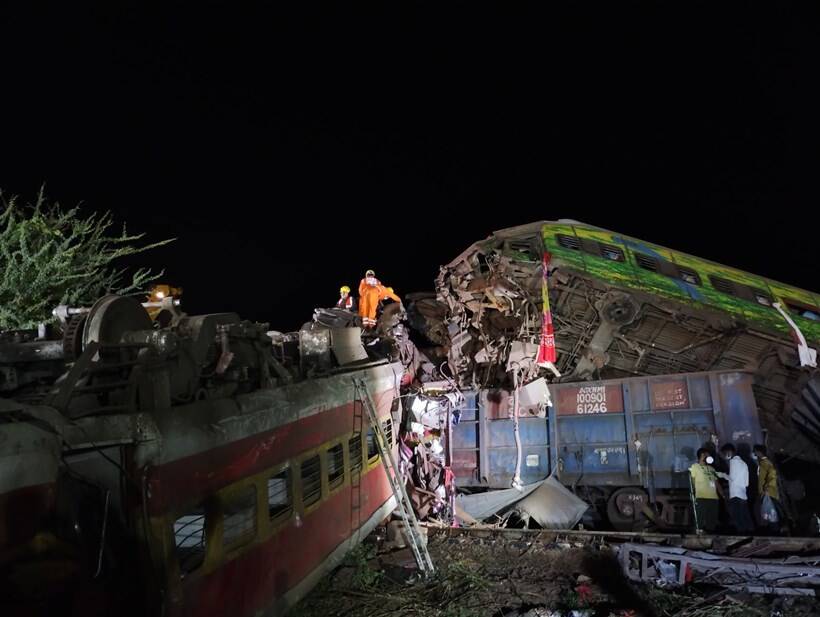
Rescue teams search the wreckage of the trains during a rescue operation after the triple train mishap, in Balasore district. (Express Photo by Partha Paul) 4/12
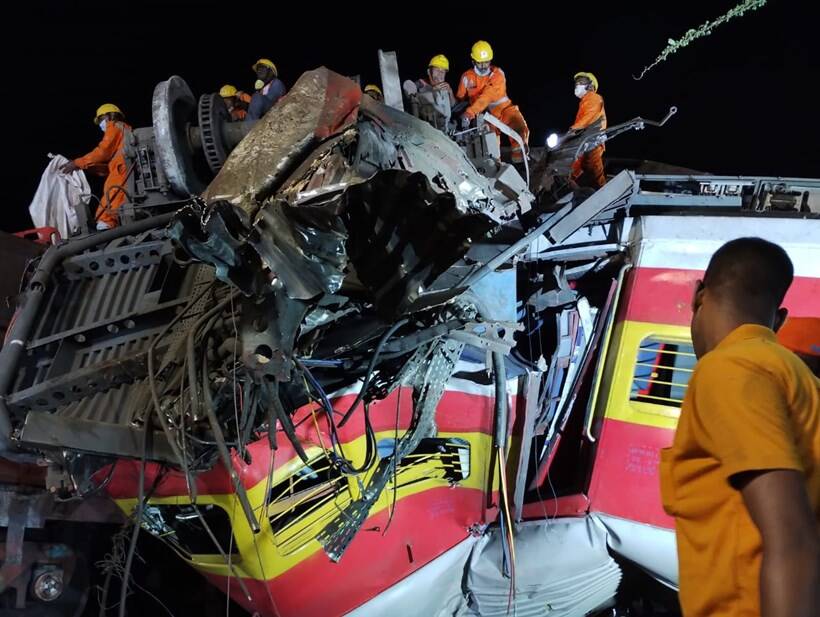
The accident took place at 7 am yesterday when a passenger train hit the derailed coaches of another train followed by a collision with a goods train causing a crash of several coaches. (Express Photo by Partha Paul) 5/12
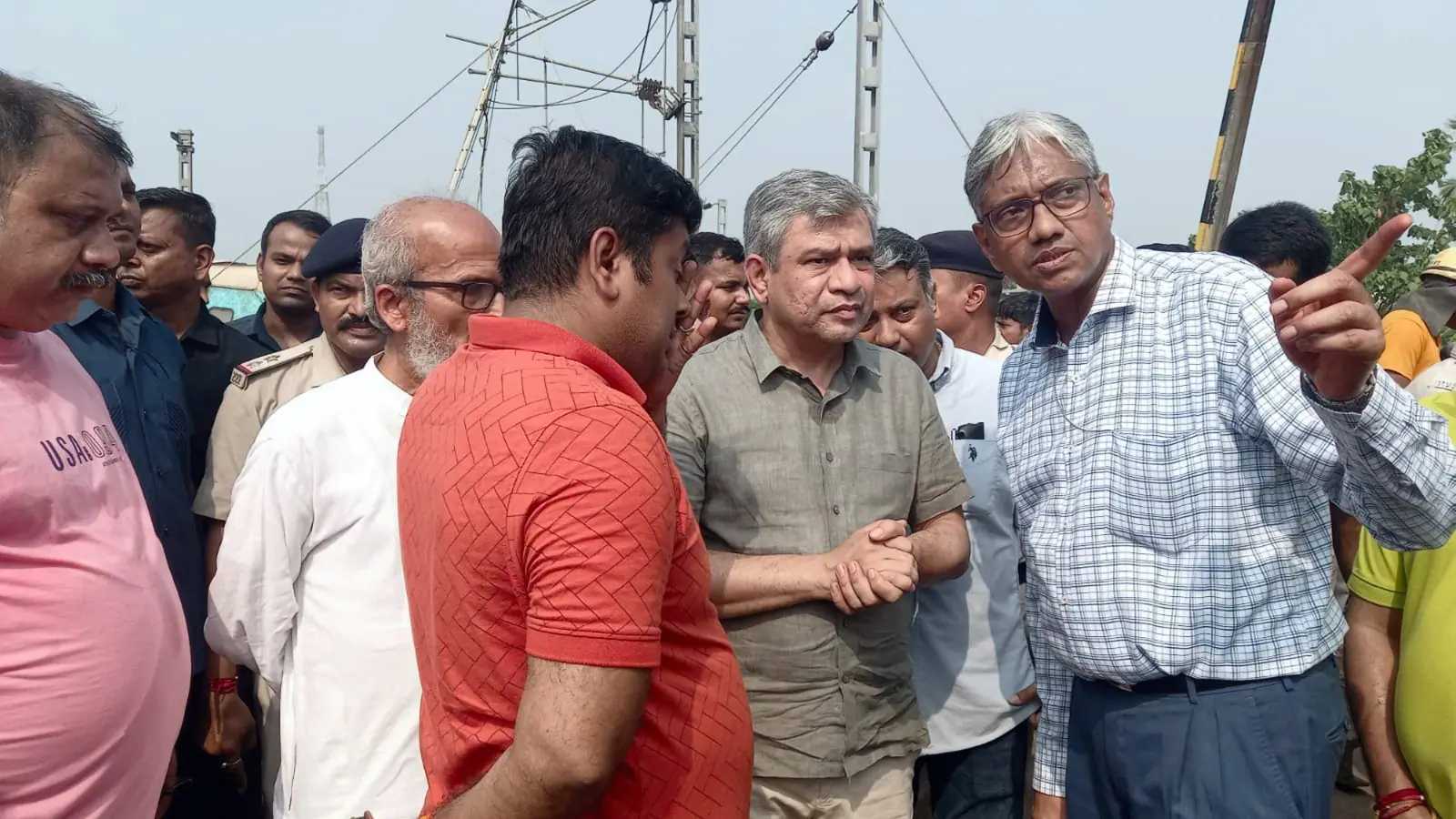
Railway Minister Ashwini Vaishav visited the accident site and took stock of the situation (Photo :PTI) 6/12
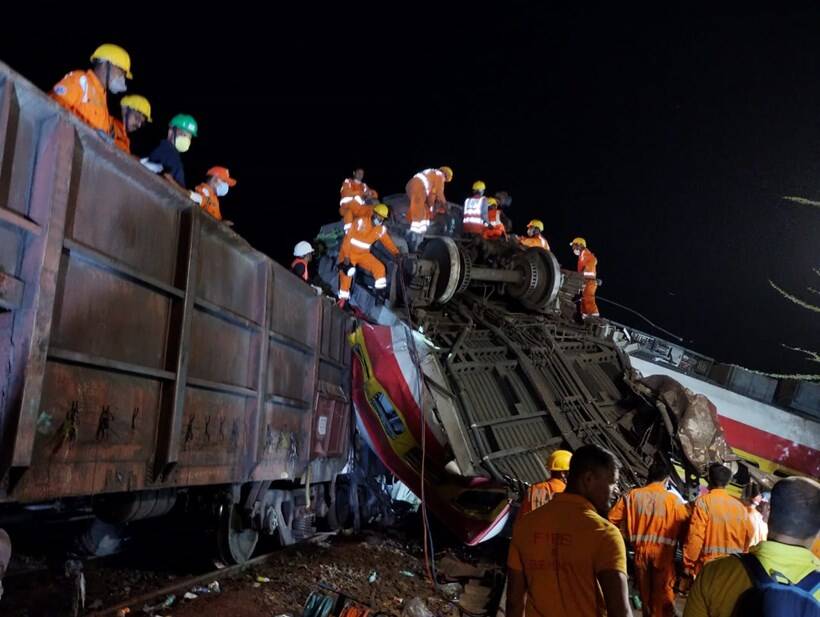
Visuals from the crash site showed smashed train coaches torn open and twisted train tracks. (Express Photo by Partha Paul) 7/12
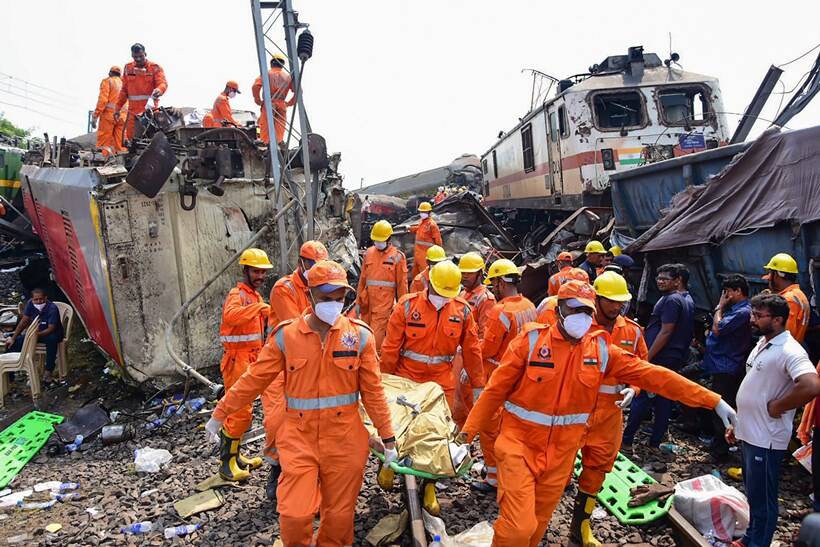 NDRF personnel carry out rescue work (PTI Photo) 8/12
NDRF personnel carry out rescue work (PTI Photo) 8/12
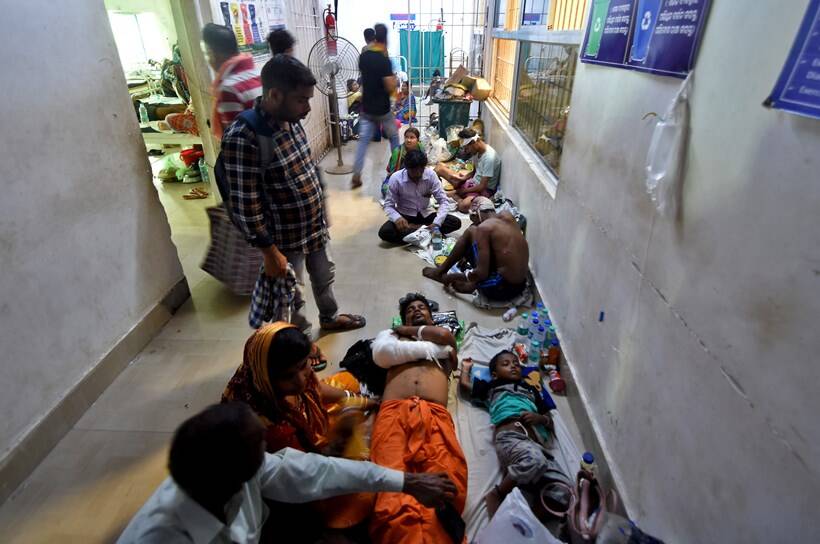
People, who were injured in trains collision, lie in a hospital corridor in Balasore district in the eastern state of Odisha, India, June 3, 2023. REUTERS 9/12
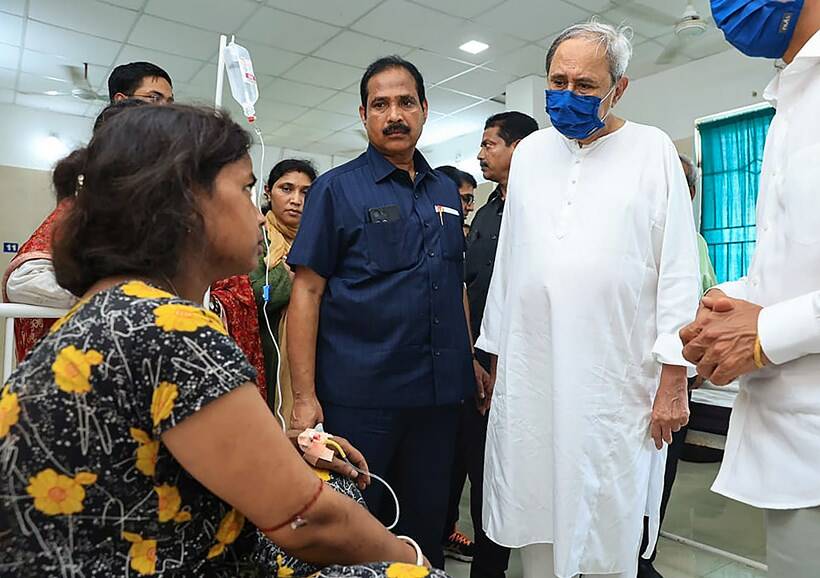
Odisha Chief Minister Naveen Patnaik meets an injured at a hospital in Balasore (PTI) 10/12
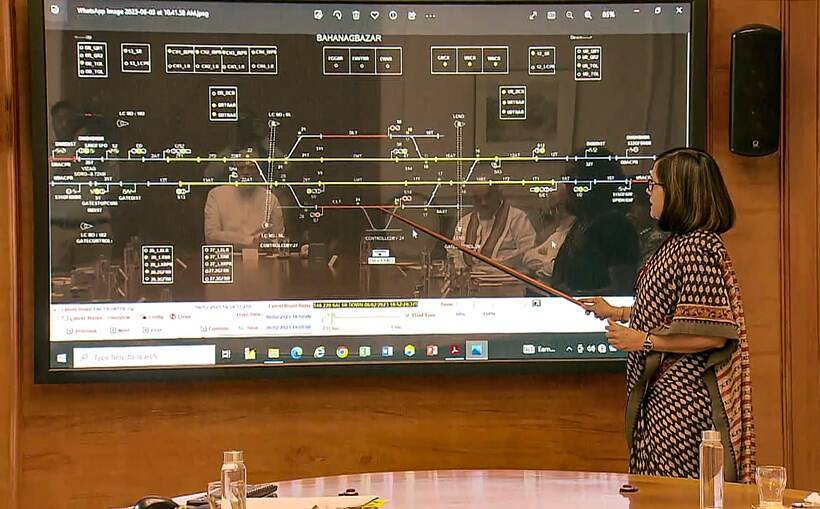
An official gives a demonstration about the Odisha train accident as Prime Minister Narendra Modi chairs a meeting to take the stock of situation after the mishap, in New Delhi, Saturday, June 3, 2023. (PTI Photo) 11/12
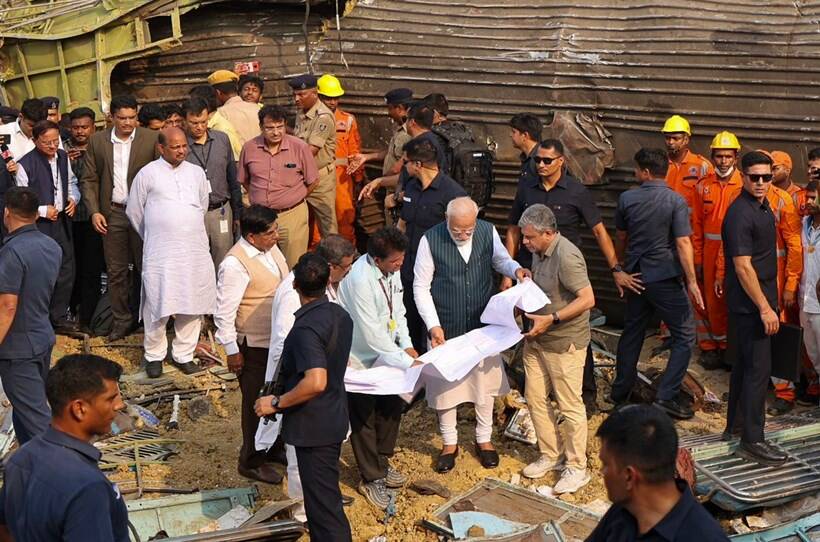
Prime Minister Narendra Modi takes stock of the situation at the site of the accident in Balasore district, Saturday, June 3, 2023. Union Railways Minister Ashwini Vaishnaw is also seen. (PTI Photo) 12/12
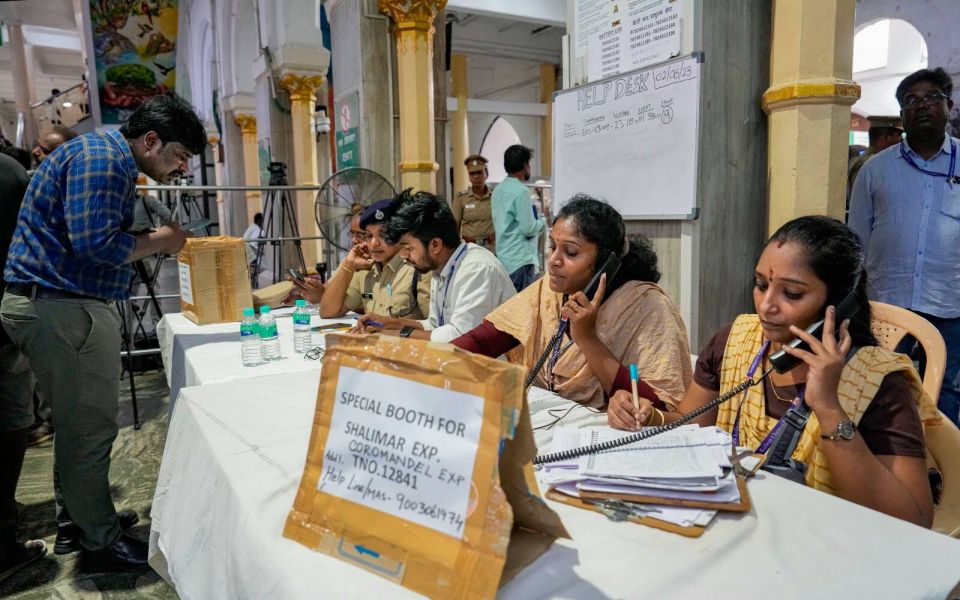
Emergency helpline number has been released by the Odisha Government ( Photo : PTI)
Late Saturday, the flurry of activity continued at the accident site. Under searchlights and surrounded by heavy earth-moving machinery, NDRF personnel could be seen atop a pile of coaches using gas cutters to enter compartments in case there was anyone inside – living or dead – who had not been recovered. They said they would continue to work through the night.
Odisha Fire Services Director General Sudhanshu Sarangi, who monitored the operation, told The Sunday Express that the investments made by the state government in upgrading capacity and procuring equipment had paid off in effectively handling the rescue operation.
“Our priority was to rescue all those alive and to extend them the necessary medical treatment. After that, we started recovering the bodies. Around 250 Fire Services personnel and 120 members of the ODRAF were pressed into action from our side and we did whatever best was possible,” he said.
Sarangi said the major challenge before them was to coordinate with personnel from multiple locations and to take them to the site along with equipment.
“Within a few hours of the accident, our personnel managed to cut into the compartments using hydraulic cutters. We could not remove the compartments from the tracks as heavy cranes were required, which were brought Saturday,” Sarangi said.
The NDRF had also deputed nine teams along with equipment and sniffer dogs who played a major role in pulling out bodies from inside the derailed coaches.
“It was a major rescue operation… We moved teams to the accident spots swiftly,” said a senior NDRF personnel engaged in the rescue operation.
Many of the dead in the Howrah-bound train are believed to be labourers on their way home. Rescue personnel are collecting their luggage, other belongings and documents, hoping these would help in identification of the bodies.
Prime Minister Narendra Modi, Railway Minister Ashwini Vaishnaw and Chief Minister Naveen Patnaik visited the accident site to take stock of the situation. The leaders also met the injured in the hospitals.
“The government is with the families of the deceased. I don’t have words to express the tragedy. Whoever was responsible for the mishap will not be spared,” Modi said.
Chief Minister Patnaik praised the people of Balasore for turning out in large numbers for the rescue operation.
Volunteers and locals were the first responders. Even before the NDRF or Fire Services personnel had reached, they climbed atop derailed coaches to rescue those who were alive and crying for help. Although adequate ambulances were not there at the time, volunteers from various organisations rushed them to safety by carrying them on their shoulders.
Prithivi Behera, part of a volunteer organisation called Adarsh Yuva Parishad, said as many as 40 volunteers from the outfit were on the job at the accident site and in different hospitals.
“We got the news around 7.15 pm following which around 20 of our volunteers rushed to the spot. We were scared when we first saw the scenes. People were helpless, crying. We managed to rescue as many as we could. We also deputed volunteers at different hospitals,” he said.
Babuli Soren, a local resident, said, “We couldn’t control ourselves; we had to help. Whatever was possible for us, we did. Many people were asking for water. We brought buckets and whatever containers we had at our homes and started distributing. We also helped pull some passengers from the derailed coaches,” Soren said.
Hundreds of volunteers stood in a queue outside the blood bank at Balasore Hospital to donate blood for the injured. Official sources said over 500 units of blood had been collected overnight at Balasore. Chief Secretary P K Jena said around 900 units of blood were in stock.
Railway sources said around 10 of 23 coaches of the Coromandel Express, including two of general class, five of sleeper class (S1 to S5) and two of AC class (B4, B5), were severely damaged in the collision, leading to maximum casualties. Two general coaches of the Howrah-bound train also capsized, said sources in the South Eastern Railway.
Rajesh Kumar, Senior Deputy Commercial Manager of South Eastern Railway, said the speeding Chennai-bound Coromandel Express hit a goods train, which was standing on the loop line at the station, leading to the derailment of both trains. The goods train then hit two general coaches of the superfast from SMVT Bengaluru which was heading to Howrah in the opposite direction.
“It needs to be probed why the Coromandel Express changed track to the loop line from the main line,” Kumar told The Sunday Express.











